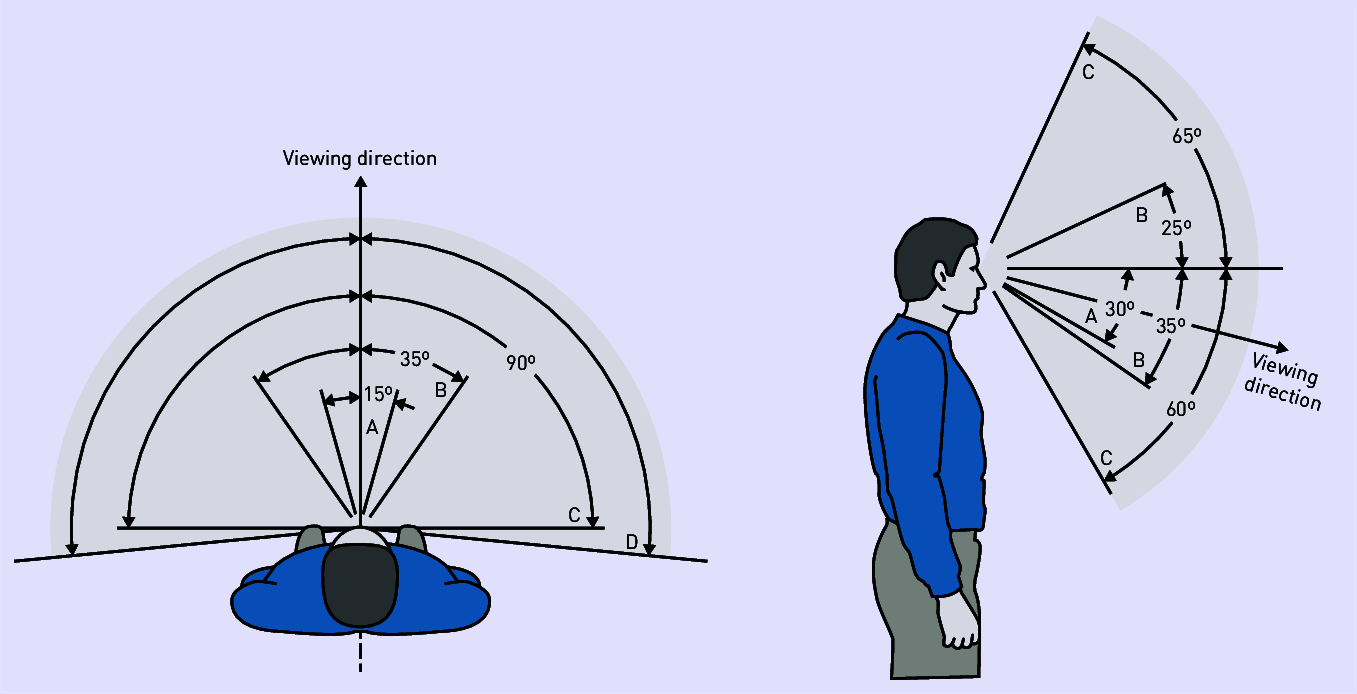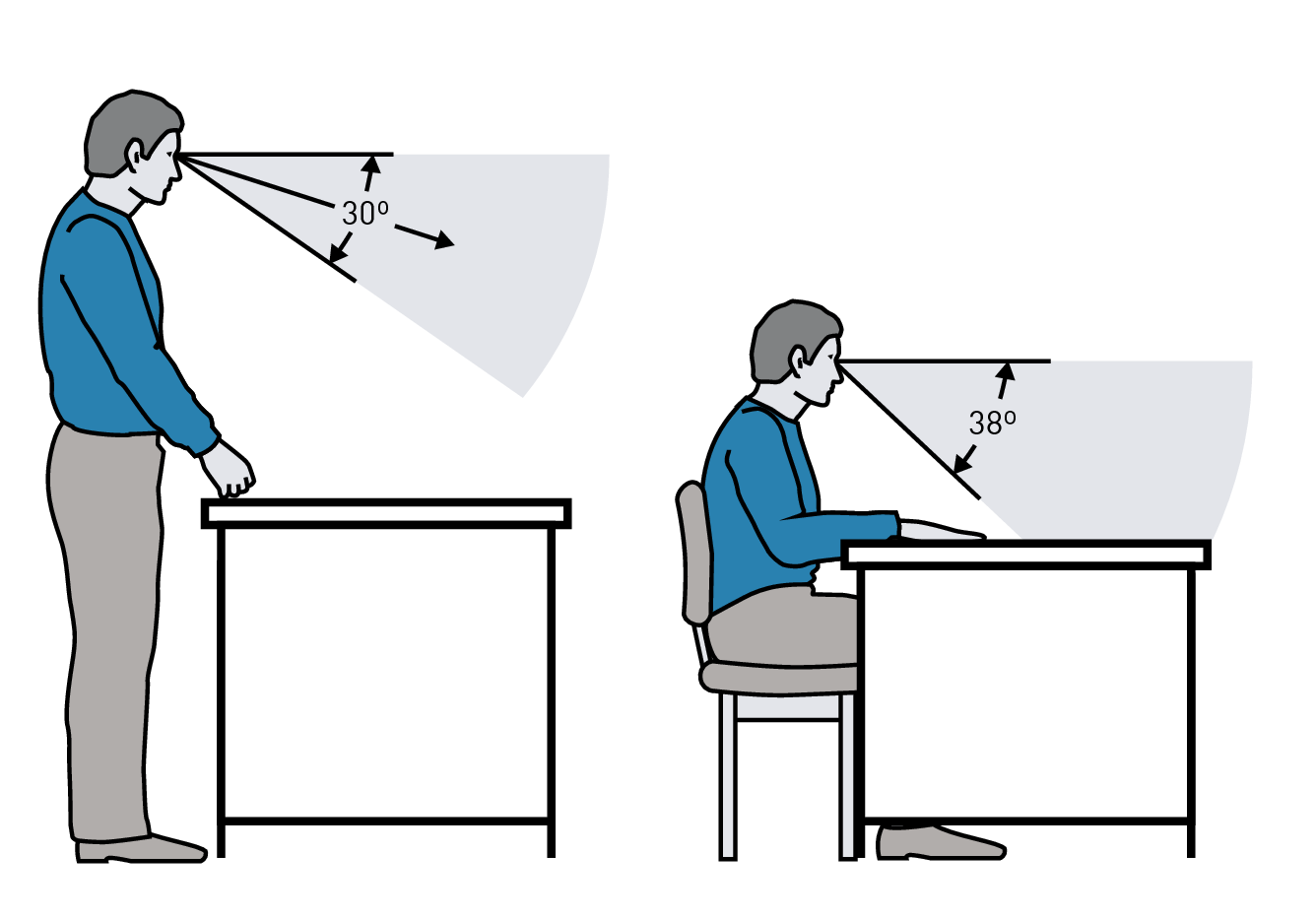
Figure 3.80: The maximum handling area for men (left) and women (right), measurements in cm.
Postbox 1960
D-59753 Arnsberg

Figure 3.80: The maximum handling area for men (left) and women (right), measurements in cm.
The determination of the visual task area to which the lighting quality criteria apply, is likely among the most difficult tasks when it comes to lighting design for industrial workstations. References on this subject are provided in chapter "Lighting quality criteria", section "Visual task area", where workstation design criteria were also factored in. It is also possible to go by ergonomic rules in order to determine the visual task area for manual tasks in industrial applications. In most cases, the field of view can be described using the handling area (fig.). The handling area encompasses approximately 0.60 m to 1.60 m. The ergonomically defined viewing angle range provides further references for determining the visual task area (fig. and fig.).

Figure 3.81: Horizontal viewing angles for work performed standing up (horizontal field of view, left) and vertical viewing angle (vertical field of view, right)
Area A registers visual tasks in the ideal field of vision without moving eyes or head: ± 15° horizontally from the direction of view and -30° vertically from the horizontal line of reference
Area B registers visual tasks in the maximum field of vision without moving eyes or head: ± 35° horizontally from the direction of view and +25° to -35° vertically from the horizontal line of reference
Area C registers visual tasks which can be fulfilled without moving the head (maximum field of view): ± 90° horizontally from the direction of view and +65° to -60° vertically from the horizontal line of reference
Area D can only be viewed by moving the head.

Figure 3.82: For work performed standing up, the natural and relaxed head inclination and thus the inclination of the viewing direction from the horizontal is up to -30°, the optimum, however, is -15°; for sitting tasks, this angle goes up to -38°, and for many visual tasks (e.g. writing) it goes up to -65°.